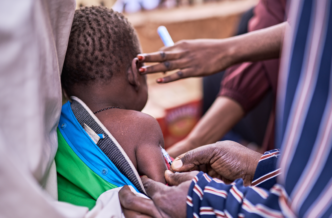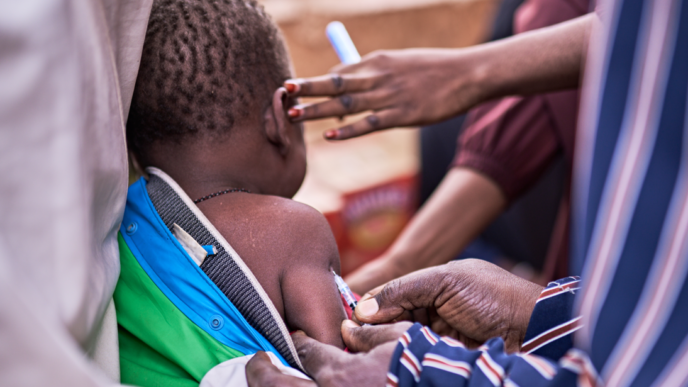Mosquitoes transmit malaria
BY VICTORY EMILOMO OAIKHENA
Just two days ago, the World Health Organization certified Egypt as malaria-free. I was so excited! However, my excitement quickly diminished when I learned that only one country in all West Africa has been certified malaria-free. And guess what? It’s not Nigeria—it’s Cabo Verde.
Yes, it’s true—Nigeria has made significant strides in malaria prevention through partnerships with international donors, non-governmental organizations, and community-based groups. But the pressing question remains: what role are YOU playing in eradicating malaria?
Malaria remains one of the leading causes of illness and death in Nigeria, accounting for an estimated 95,000 child deaths annually. Despite the establishment of the National Malaria Strategic Plan (NMSP) in 2013, Nigeria still faces the highest malaria mortality rate in sub-Saharan Africa.
The National Malaria Strategic Plan (NMSP) aims to reduce malaria deaths to fewer than 50 per 1,000 births and achieve a parasite prevalence rate of under 10% by 2025. Over the years, notable organizations have facilitated the implementation of projects focused on surveillance and pharmacovigilance to monitor parasite resistance to medication. They have also provided affordable treatment drugs, reviewed treatment policies to address adverse drug reactions, and continuously developed combination therapies to combat resistance. Additionally, these organizations have supplied diagnostic equipment to improve malaria testing in medical facilities nationwide, distributed 60 million insecticide-treated nets (LLINs) to households—particularly for children and pregnant women—and facilitated the recent approval of the R21 malaria vaccine. Despite these efforts, nearly 200,000 malaria deaths were recorded last year.
Advertisement
Now, let’s explore the theory of seed germination. Seeds require water, oxygen, and an optimal temperature for their embryo cells to begin expanding. You would agree that seeds remain dormant until favorable conditions for germination are met. The same principle applies to achieving a malaria-free nation. Unless we, as a nation, intentionally ensure that our environment is consistently clean, we may find ourselves repeatedly cycling through strategies to eliminate malaria, without making lasting progress.
Environmental management played a crucial role in eliminating malaria in European countries and the United States and in reducing the disease’s burden in many other regions. In southern Brazil, for example, malaria transmitted by a bromeliad-breeding mosquito was eradicated through the removal of bromeliads from urban areas and the introduction of eucalyptus trees in forested areas, as bromeliads do not grow on eucalyptus. Housing improvements, first pioneered by Italian hygienist Angelo Celli in the late 19th century, were a key intervention in Europe, the U.S., and during wars. In China, intermittent irrigation strategies have been and continue to be important for controlling rice-field malaria. Numerous historical examples show the success of environmental management in both urban and rural settings, proving to be cost-effective. However, without adopting environmental management as part of the overall strategy, Nigeria may not achieve the same success in malaria eradication.
Lessons from contemporary environmental management for malaria control are twofold;
Advertisement
1. Established participation of communities, which contributes to the sustainability of the activity and promotes a sense of ownership and empowerment.
2. Multisectoral collaboration, integrating health actions with sectors responsible for agriculture, urban planning, transportation, education, and finance.
Many countries have adopted Integrated Vector Management (IVM), which combines biological, chemical, and environmental strategies to control mosquitoes, the primary vector of malaria. Nigeria should enhance its IVM practices by focusing on improved environmental management. This includes reducing mosquito breeding sites, such as stagnant water, and ensuring effective insecticide spraying in high-risk areas. These efforts require efficient implementation of environmental protection policies.
In addition, source reduction through urban planning can be highly effective. Collaborating with local companies to invest in proper urban and rural infrastructure, including drainage and waste management systems, can help reduce stagnant water accumulation, a critical factor in mosquito breeding. Encouraging local government authorities to maintain clear waterways and ditches, with the possibility of sanctions for non-compliance, could further support mosquito control efforts.
Advertisement
Promoting climate-smart agriculture, particularly in rural areas where irrigation projects create mosquito habitats, will also help reduce malaria incidence. Sustainable water management practices should be encouraged among farmers and local communities.
By applying these strategies, Nigeria can strengthen its malaria control efforts, reducing reliance on chemical interventions and moving towards a more holistic and sustainable approach to vector management.
Note: The content of this article is intended to provide a general guide to the subject matter. Specialist advice should be sought about your specific circumstances.
Oaikhena can be reached via [email protected]
Advertisement
Views expressed by contributors are strictly personal and not of TheCable.
Add a comment










